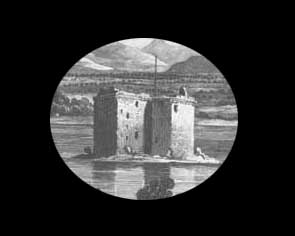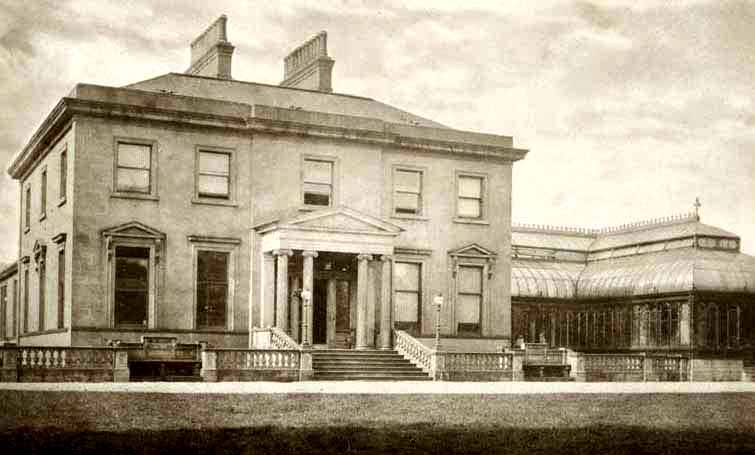
Craigielinn House once stood
near the top of the Gleniffer Braes in what was a 45 acre estate
not far from Paisley Golf Course and Glenburn reservoir.
Remains can be found today beside a style
(through
a
fence) just below the tree line. The map
below right (click for larger version) is annotated with the place names that can be found at
the bottom of
this 1868 map. The house still appears in the 1947
map (left). It's easy to find by
following a line of bushes (marked by a blue line) on the map that veers to the left
straight down to the fence. The same
line is still visible on Bing maps (right).
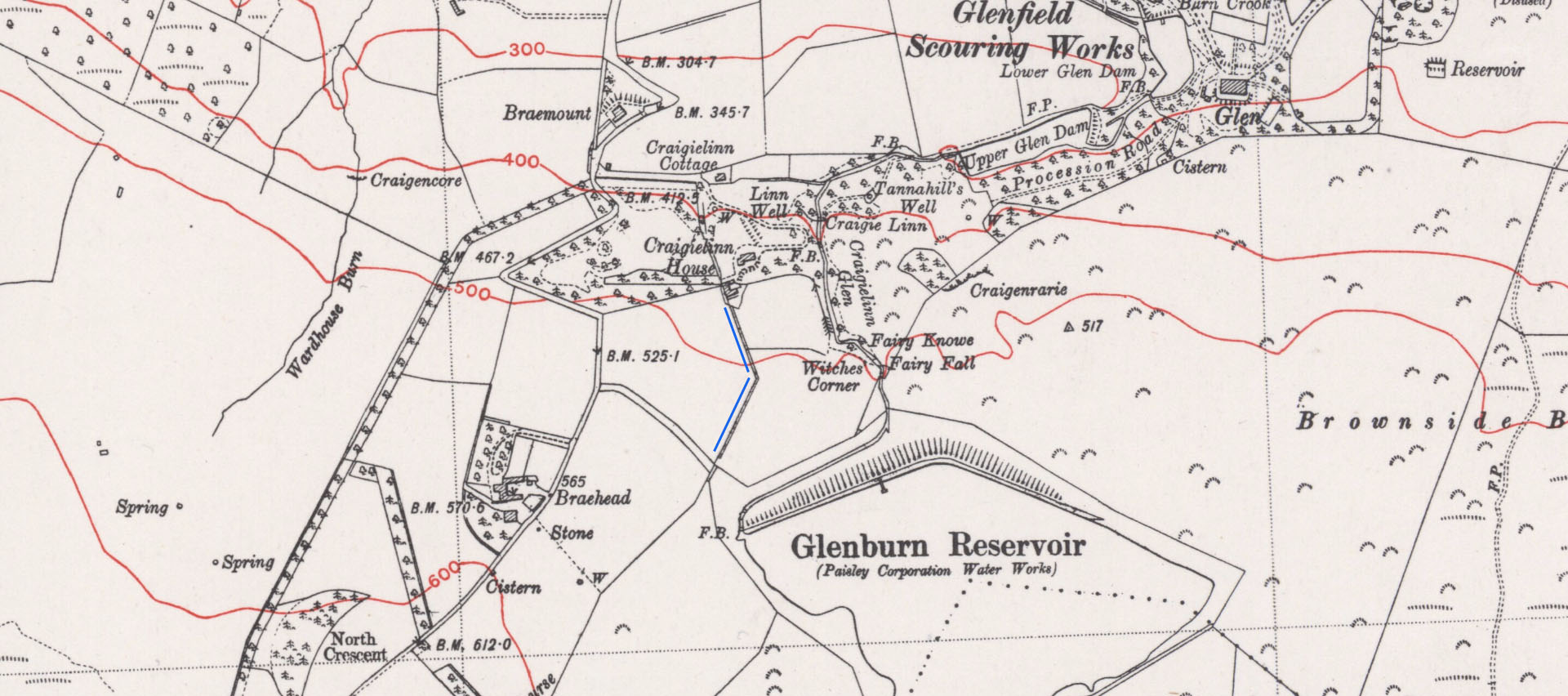 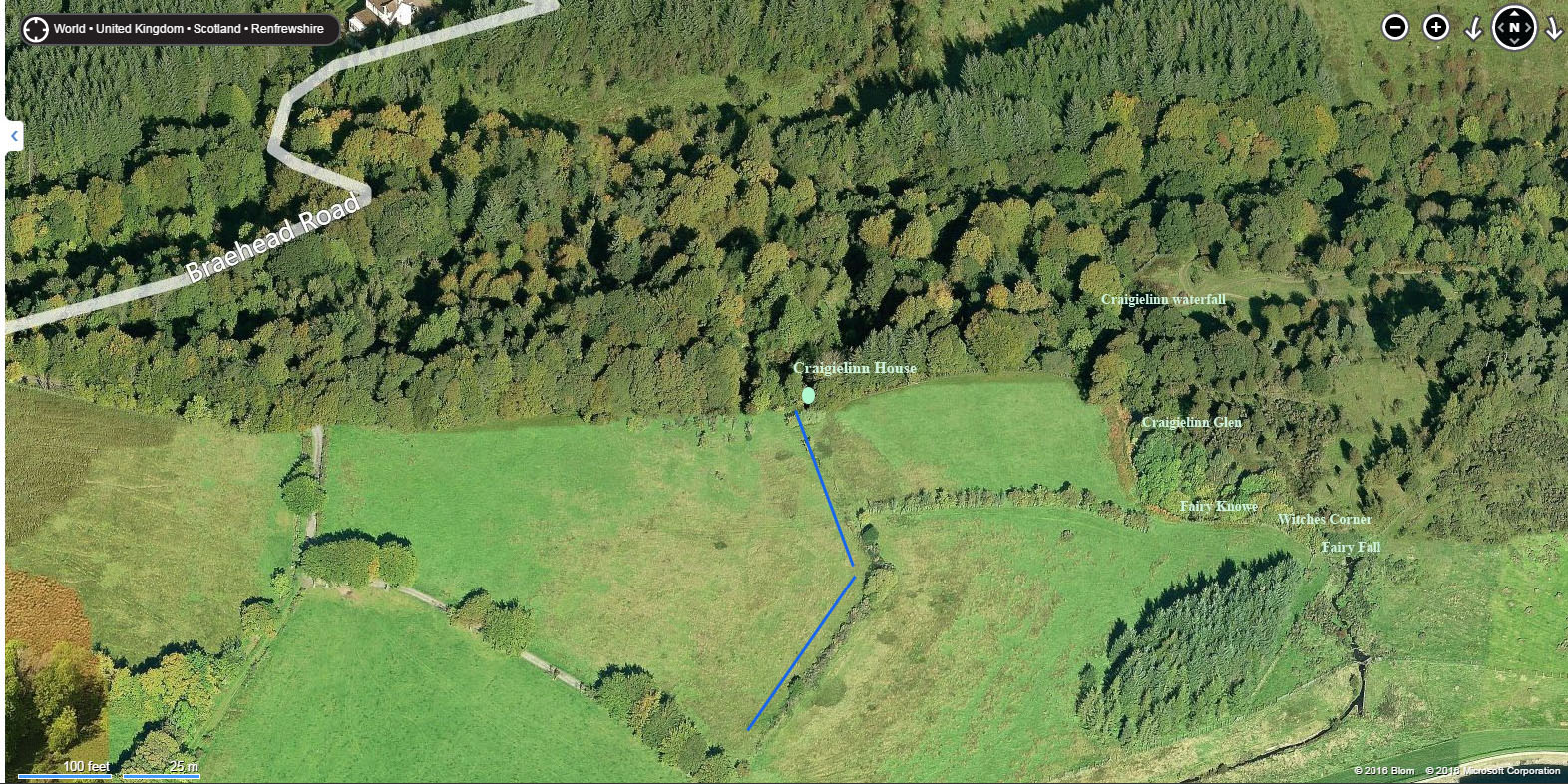
The building was
described as "a superior dwelling house with garden and
ornamental grounds attached the property of Rev P Brewster
and occupied by him". The configuration of the property
is different in the 1947 and 1868 maps. The wall looks like
part of the larger 1947 building.
Brewster was the renowned Paisley
Abbey minister, crusading preacher, author and political
radical
Patrick Brewster who lived in the house until his death
in 1859. In 1922, it was bought by Glasgow philanthropist George
Carter Cossar as a training farm for destitute boys
before emigration to Canada. More
here.
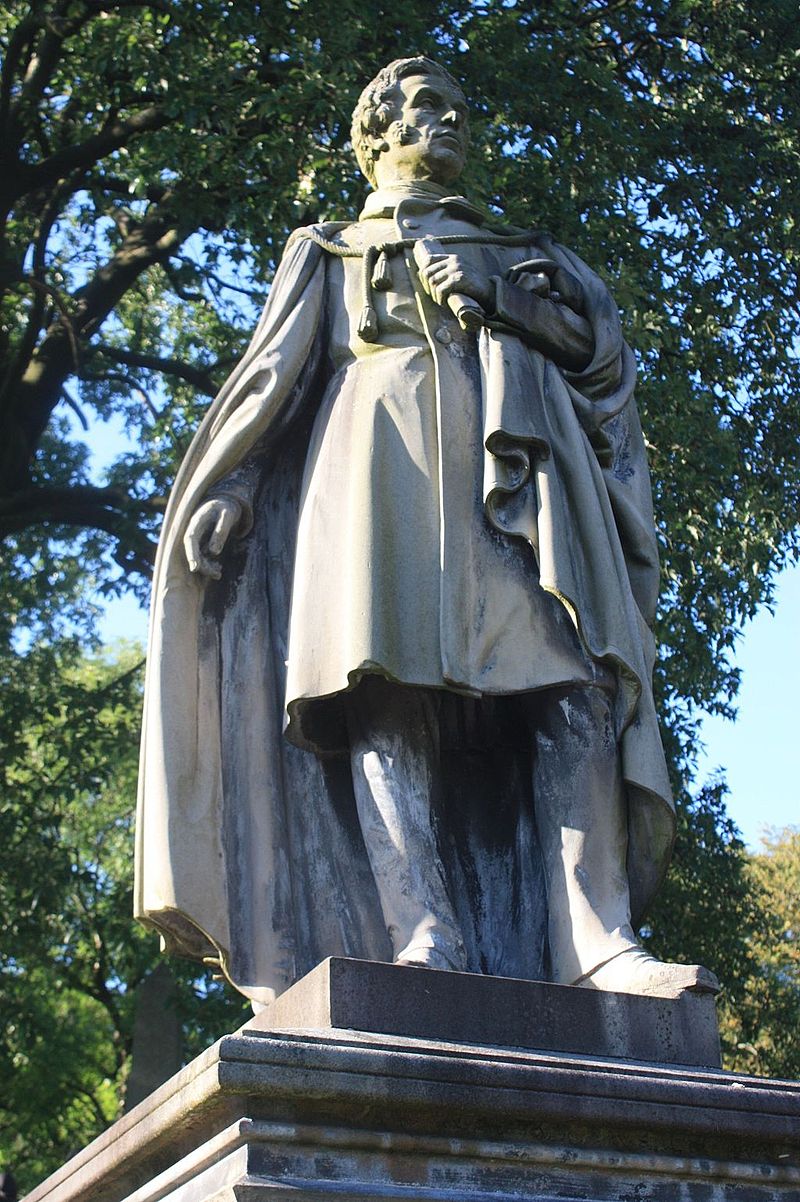
That there is a style at the remaining wall may not
be a coincidence. Either a modern
replacement or put there to allow access to the ruin.
The house is situated in a
significant hollow created by a small stream and there is what appears to
be a boundary wall at the other side of the fence (right)
which can be seen on the 1947 map.
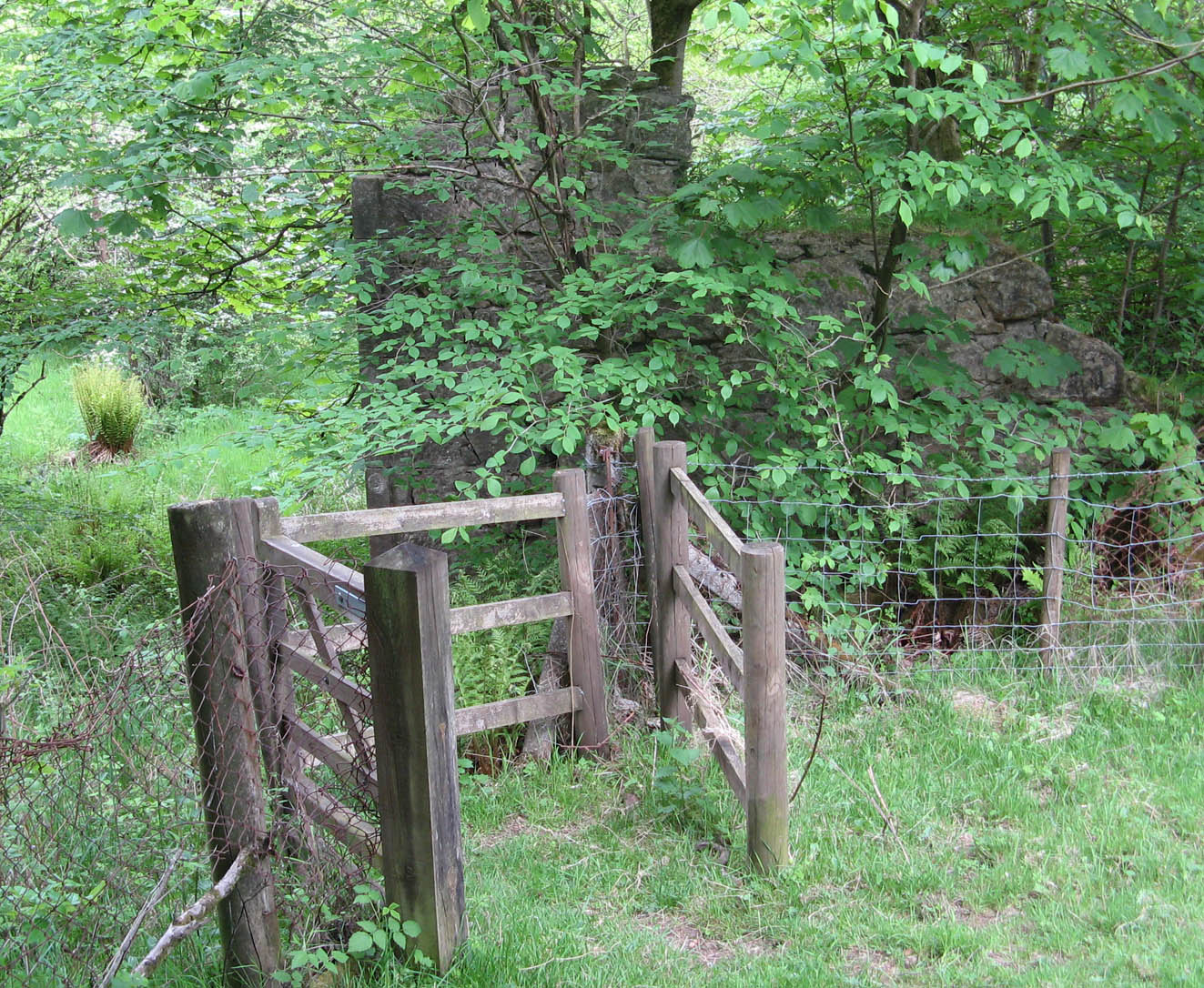
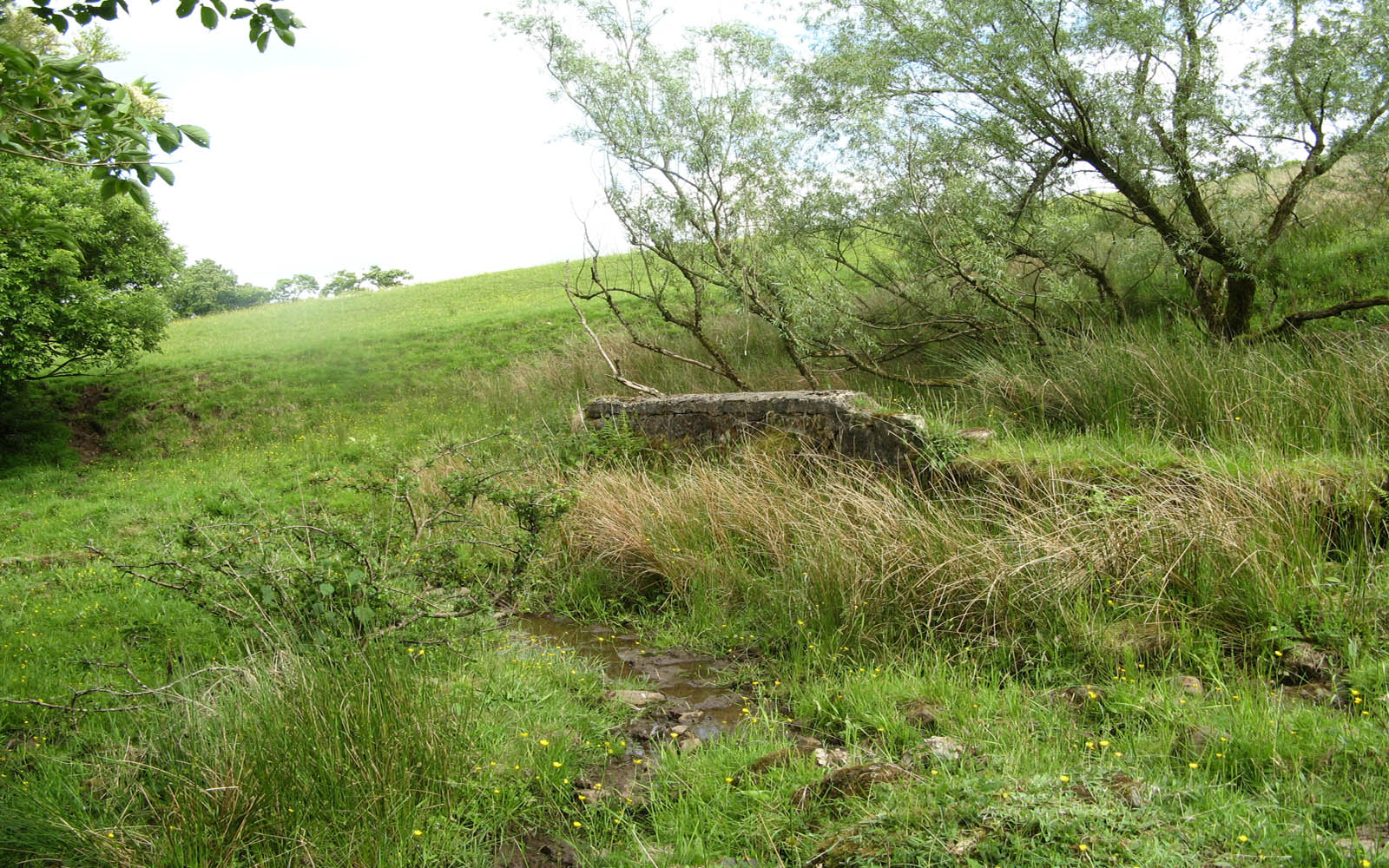
There is also what looks like
a brick base a few yards from the wall (left).
Witches Corner is on the right.
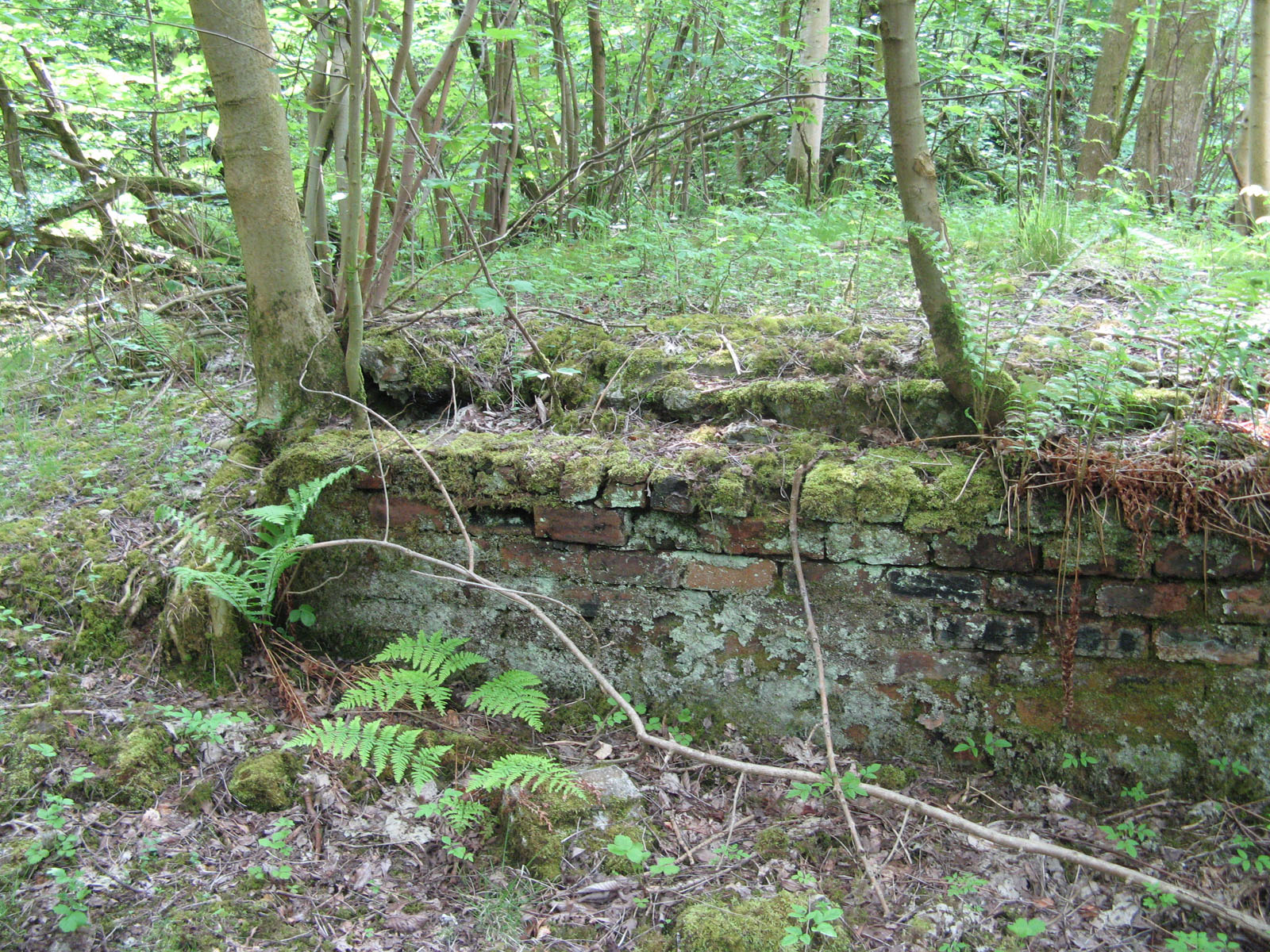 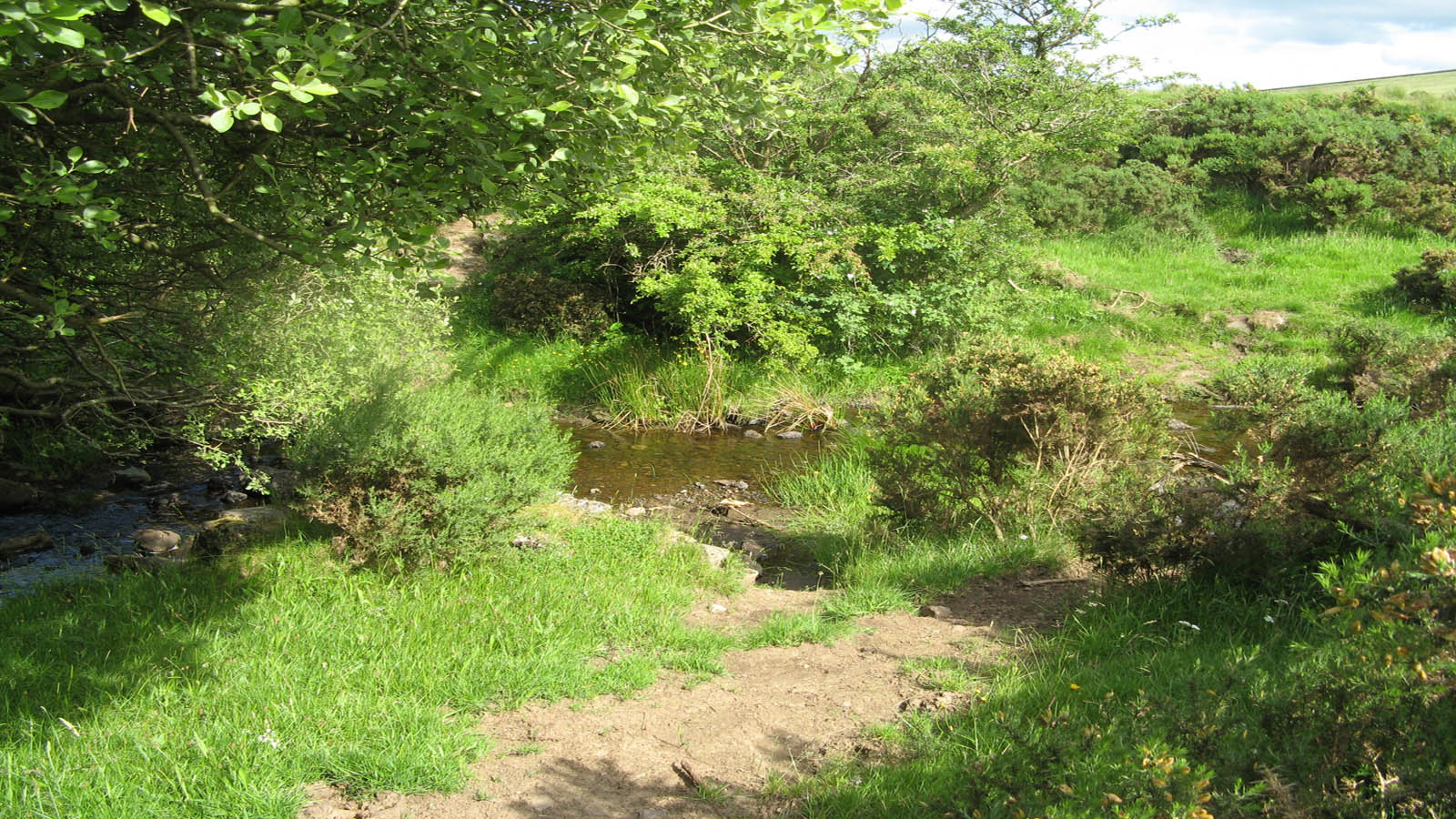
The names Fairy
Knowe, Fairy
Fall (Geograph) and
Witches Corner on the map
were actually created by Brewster himself
and he
applied to Ordnance Survey to have them placed on
maps as can be seen by following the link.
It's
difficult to see through the foliage, but it looks like a
steep gorge from Witches Corner down and easy to
imagine that minus the deep undergrowth, this might have
been a dramatic piece of (micro) scenery and why Brewster
went to the trouble of naming and registering places that
weren't even on his land. It was the property of a Mr Fulton
owner of the 'The
Glen' mansion. The nearby
Gleniffer Gorge made by the Gleniffer Burn is 50
feet deep in places.
They are all on
the line of the Glen Burn which
flows out of the
Glenburn Reservoir . Further downstream are the spectacular
Craigielinn falls. Here is an excellent
video made with a drone flying from the beautiful
top Linn dam up to the falls.
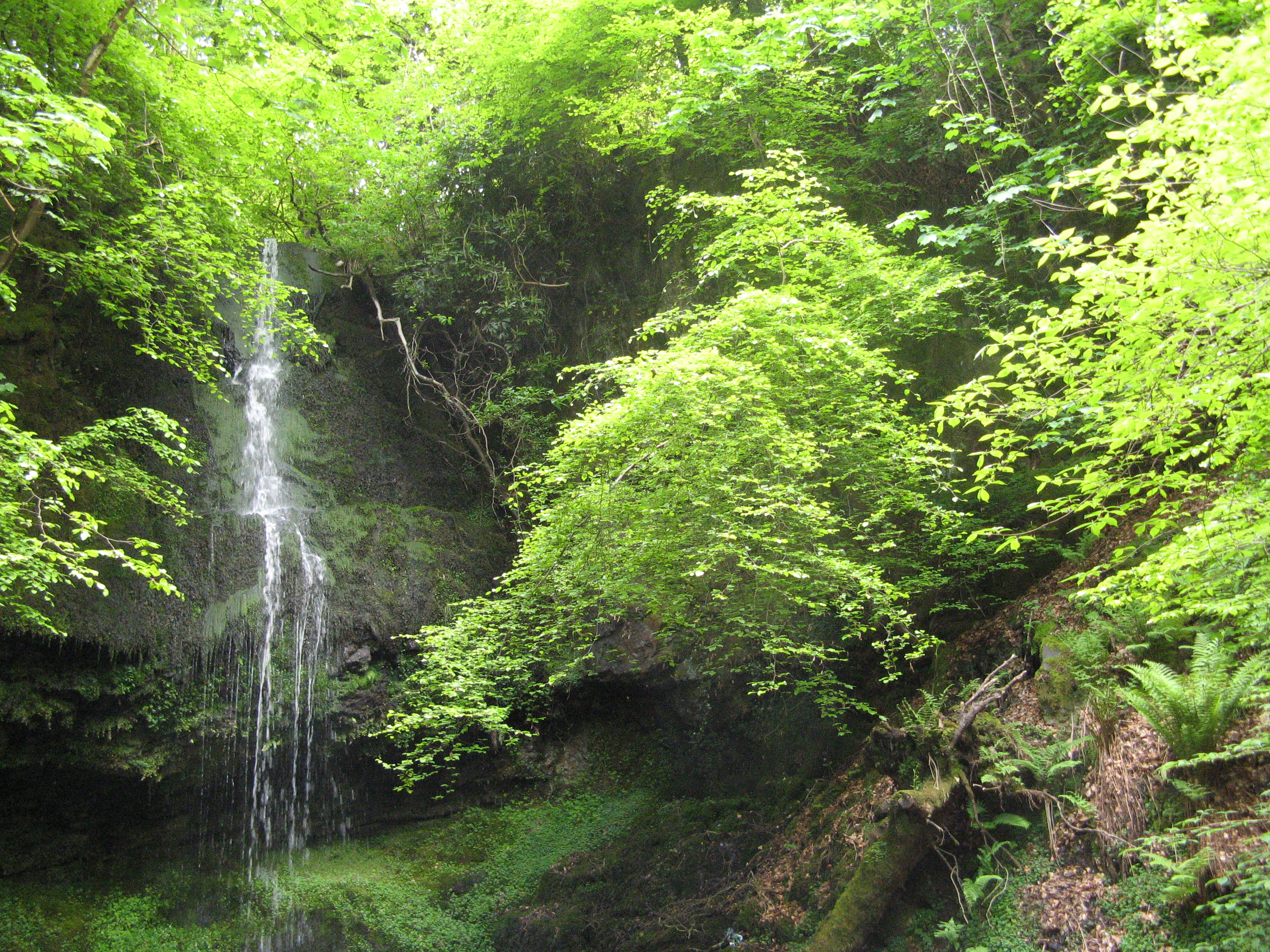
St. Margaret's at the top of Brodie Park
was designed by architect John Hutchison and
built in 1889 for businessman William Rowat.
Map
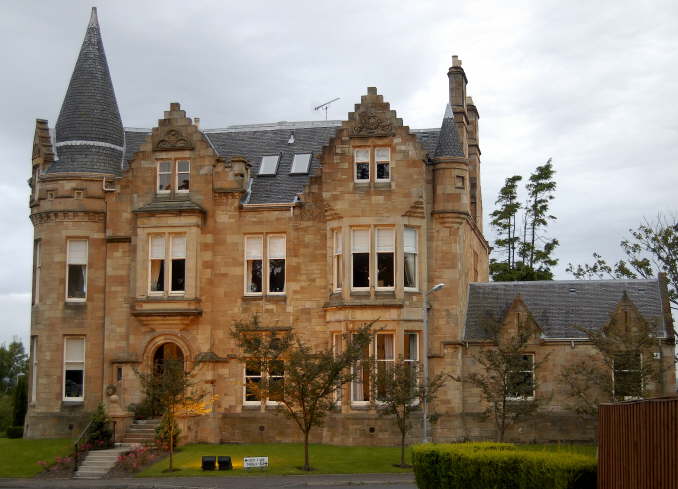
His daughter Jessie
Rowat was born in Paisley in 1864. At a time when
the local textile industry was producing high
fashion items, she was the daughter of a
manufacturer of the fine Paisley shawls inspired
by eastern designs. Educated in Paisley and
Edinburgh, she went on to study textile design
and stained glass at the Glasgow School of Art.
From 1886, she taught enamel work and mosaics at
the Glasgow School of Art, and introduced
embroidery into the curriculum. In 1889, Rowat
married the Director of the art school, the
Devon-born artist, Francis (Fra) Newbery and was
able to establish with his support a Department
of Embroidery. As a result, embroidery came to be
regarded as a mainstream form of art with close
links to other media.
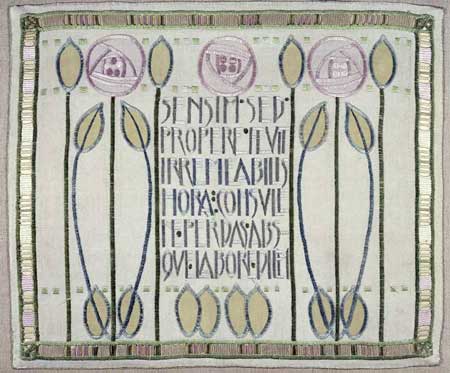
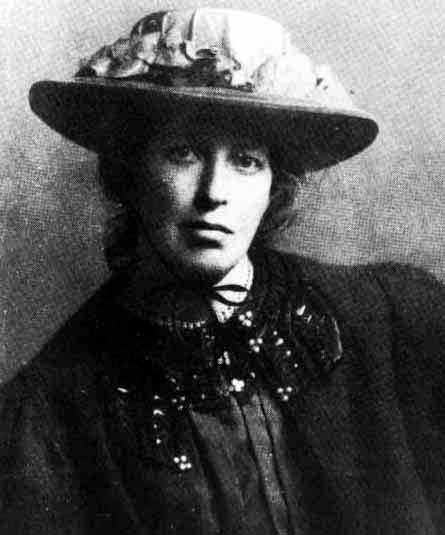
With the administrative separation of Glasgow
School of Art from English control in 1899, the
school had much greater control over its own work
which helped encourage a strong, individual
style.Fra Newbery was himself influential in
encouraging the development of the Glasgow
'Four', Charles Rennie Mackintosh, Herbert
MacNair and their wives, the Macdonald sisters,
Margaret and Frances, but Jessie's work in
breaking down the barriers between traditional
'art' and 'crafts' was especially important in
promoting the new movement.
The latter was able to break away from the common
perception that it involved little more than
laborious execution and it became recognised that
it had practitioners of merit and innovative
design in its own right. Jessie became a friend
to Mackintosh and his wife.
St.
Margaret's is recorded at
rcahms as St
Margaret's Hospital. It is said to have been a
maternity facility, presumably an annexe of the
RAI.
Peter Brough Home for Nurses - map
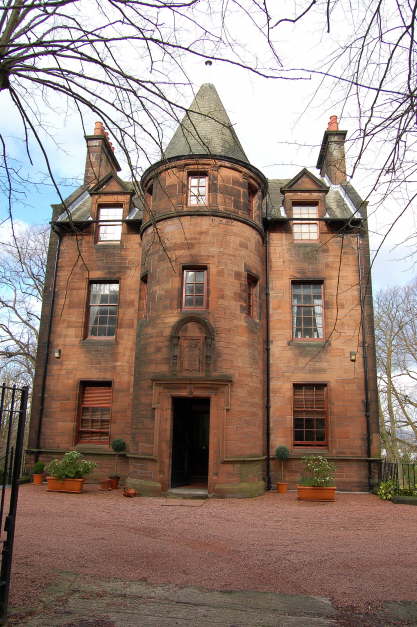
This was the home of Peter Brough, a wealthy
businesman who left the house for the benefit of
the many nurses in the Town. It is in Oakshaw
Street. He was also a benefactor to the Orr
Square church and built the church hall. He
supported district nursing in Paisley . He
endowed a nursing service which is known to have
functioned from 1892 at least until 1925. When
Peter Brough died in July 1883 he was one of the
wealthiest men in Paisley and the effect of his
wealth continues today with an active charity in
his name that focuses on what is now Paisley
University. Read his life history here
Greenlaw House map
Built in 1774, the house is in Mansionhouse Road
and has now been converted to flats.It once
belonged to Robert Corse a wealthy Paisley
businessman.
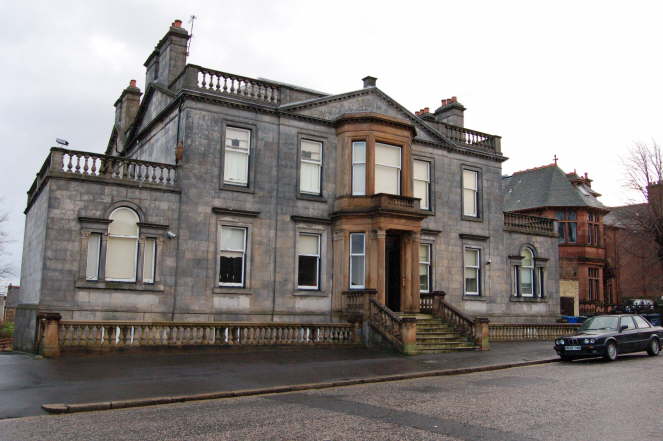
He was a representative
of the old family of Cross or Corse of Crossmill
in Renfrewshire. He was in partnership with John
Christie, under the firm of Christie, Corse &
Co. His sister married Mr. Kibble of Whiteford,
near Paisley, and her family succeeded to
Greenlaw, and were well-known calico printers in
Glasgow. He was one of the nine original partners
of the Paisley Banking
Company which was established on1st
October 1783. Read about it
here.
Brediland House map
Brediland House was the
home of the Maxwells of Brediland, who had held
lands in Renfrewshire from as early as 1487, and
Brediland Estate since at least 1580. The family
descend from the Maxwells of Pollok. In 1700 this
house boasted ten feather beds, a going clock, a
loom, and In the loft above seventeen loose floor
boards! The family owned four horses, nine cows
and one calf, and thirty sheep. Wealth indeed!
The house was single storey rubble built, with
swept attic dormers, crow stepped gables and
thatched roof with a square stair tower, a
possible later addition. The house was occupied
until about 1960 and was eventually demolished in
1976. The location isn't known.
From a description of Abbey Parish - an
estate, with a mansion, in Abbey parish,
Renfrewshire, 1½ mile SW of Paisley. A pottery,
for the manufacture of coarse earthenware is on
the estate.
This is the old farmhouse.
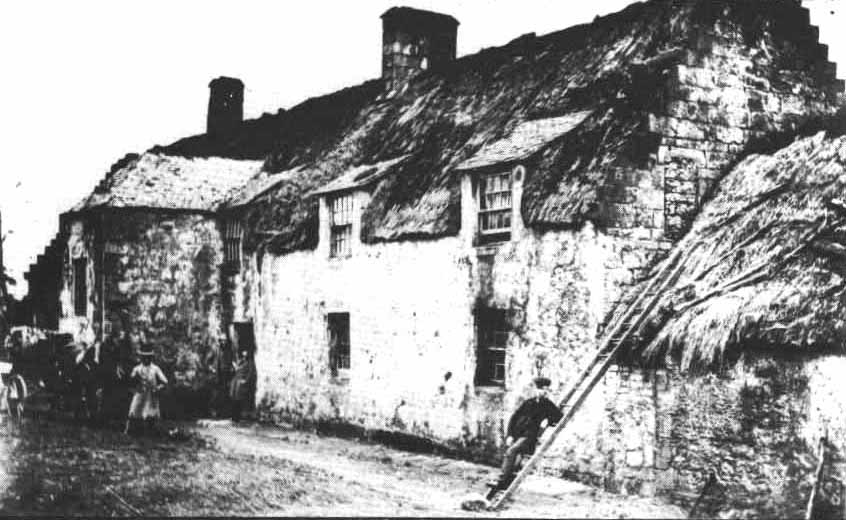
The cottage was
the oldest house in Paisley, built
1704 and demolished in 1976
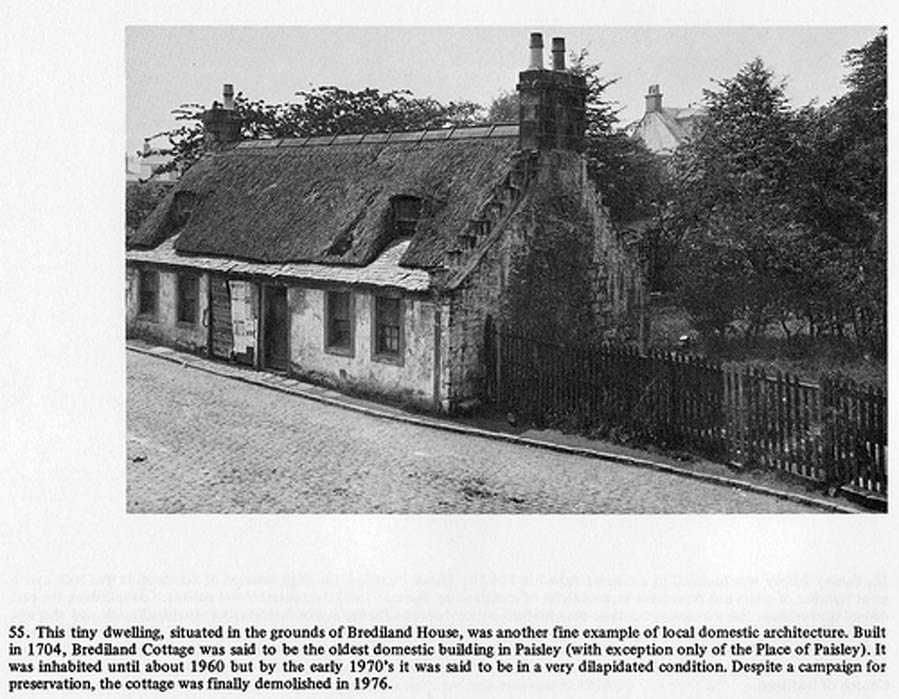
Brediland
Cottage on RCHMS
This is the modern Brediland House in the 1950's.
The photograph came from Ken Inspire, a student
graduate with Babcock & Wilcox Ltd.who stayed
there from June 1951 till July 1953. The estate
stretched from Tantallon Drive to Greenways
Avenue. The house was probably at the Greenways
Avenue end on the hill. It was purchased and
demolished by Leech Homes around 1983, not being
a listed building.
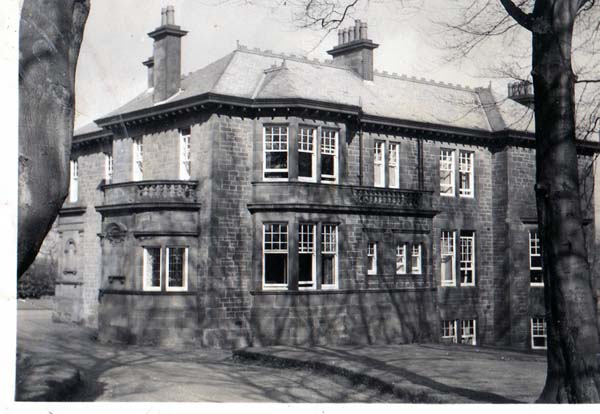
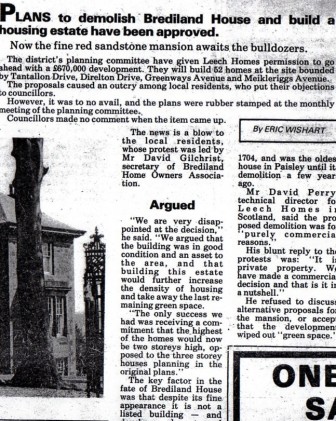 
Auchentorlie House
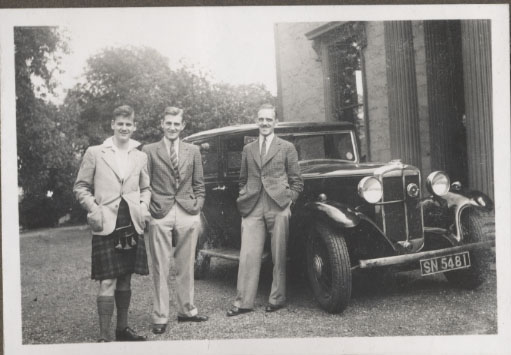
In 1910, the Paisley Parish Council took over
a large property known as Auchentorlie House on
Seedhill Road (near Lacy Street) to the east of
Paisley. The house was used as a children's home
and for maternity cases and had a total capacity
of 77 inmates. The buildings consisted of two
floors, plus attics, and included dormitories for
boys and girls, a day room and dining-hall for
the children, a waiting room for maternity cases,
an accouchement (delivery) room, probationary
wards, bathrooms and lavatories, kitchens and
outhouses, and staff quarters. The children's
home was intended for to prevent children of good
character from coming into contact with the
ordinary inmates of the poorhouse. Neglected and
under-fed children were sent to a separate
children's home at Largs.
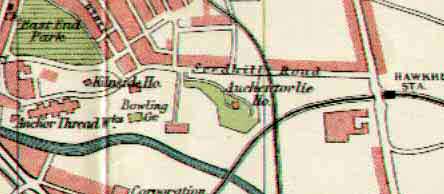
New Sneddon Street - Lowndes House
(thanks to Paisley
Oor Wee Toon)
The home of Muslin manufacturers and merchants
William and Charles Lowndes, this fine Georgian
House (said to have been the finest 18th-century
house in Paisley) later in 1875 became the
offices for the adjoining coachworks of Lowrie
& Clark. The business made both gentlemen's
carriages and more utilitarian horse-drawn
vehicles. It made the transition to the motor
car, and was still used for motor repairing in
1967. Until the works was badly damaged by fire
in the 1970s, the owners retained drawings and
other records of horse-drawn vehicles, including
gentlemen's carriages, built in the early days.
Lowndes House is now converted into an Indian
Restaurant, The Koo-I-Noor
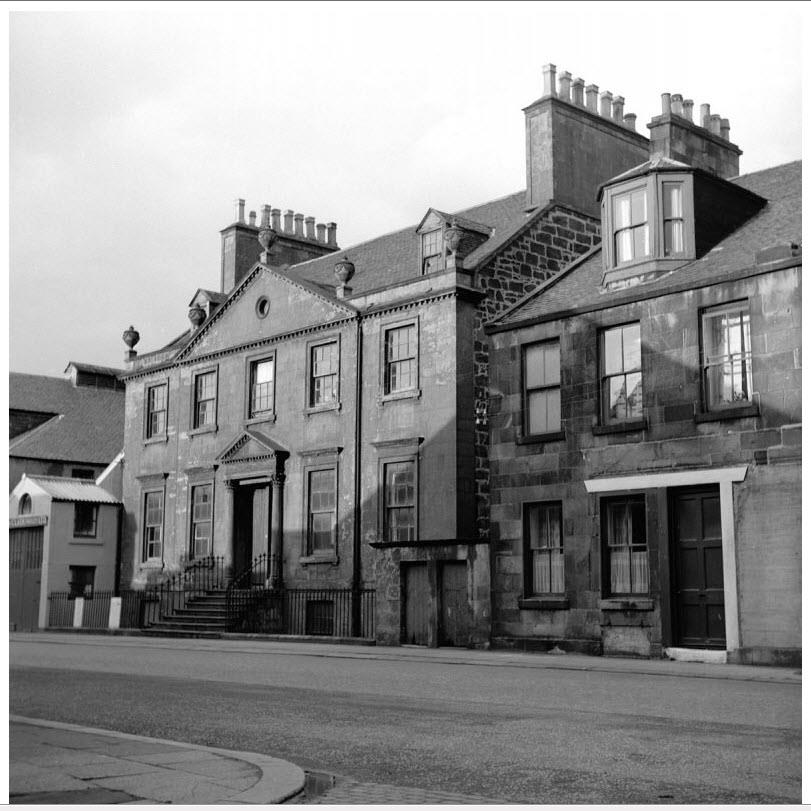
Sma Shot Cottages
Not exactly mansions but
well worth a visit.
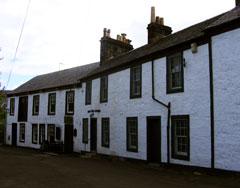
Has its own website here.
The
Drill Hall
Map

The Drill
Hall, also known as the Territorial Army
building at 76 High
Street was designed by
architect Thomas Graham Abercrombie assisted by William Kerr and
built between 1896 and 1899. It was paid
for by public subscription. Abercrombie also
built the YMCA building in New Street in 1908 and
the Wallneuk Church.
It's obviously not a mansion but
is included to increase awareness of its
delapidated state as it awaits renovation to
flats by its private owners.
There has been vandalism and a serious fire in
December 1998. It is a 'B' listed building.
Some
useful links
Old Paisley photographs
Dummy Railway photographs
Slideshows of
old Paisley pictures
TheOnlyWayIsPaisley
Paisley.org
Paisleyonline
Paisley Express
Paisley Thread Mill
Museum
Old Paisley maps
Sma' Shot Cottage
David Rowand's books
Renfrewshire Council History
Tannahill's cottage
Renfrewshire Family History
Society
Paisley- a historical
perspective
Saucel Distillery
scran
rchams
Dictionary of Scottish Architects
Scottish Screen Archive
|
